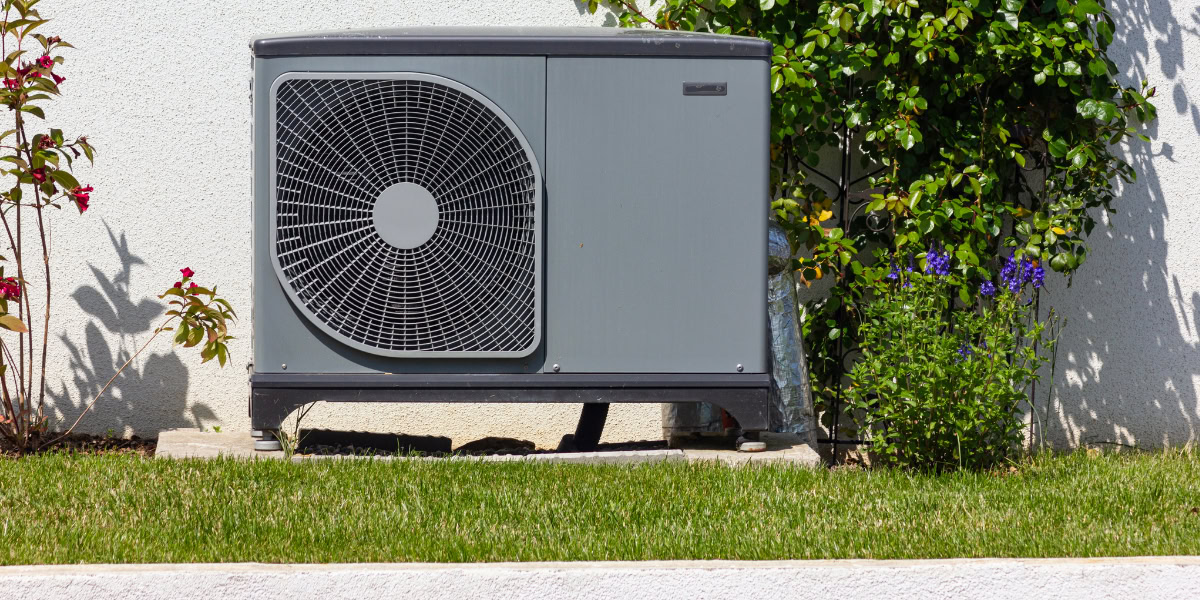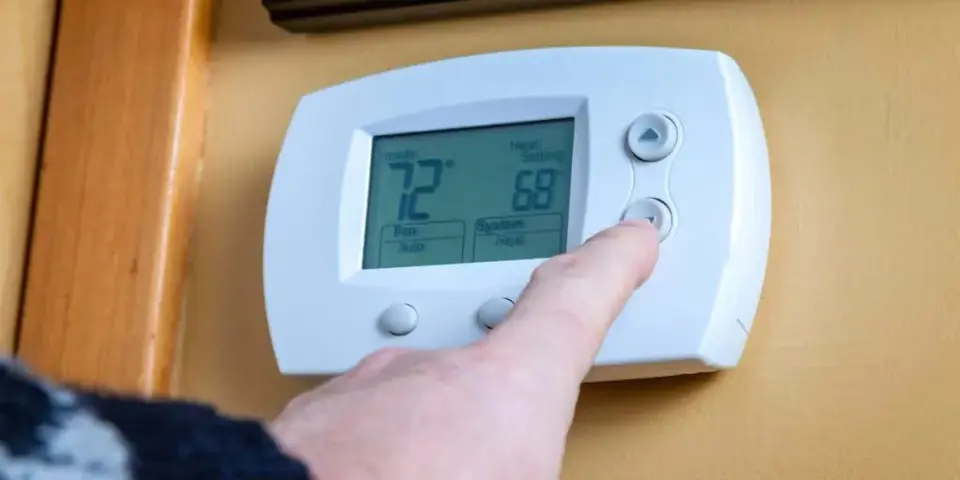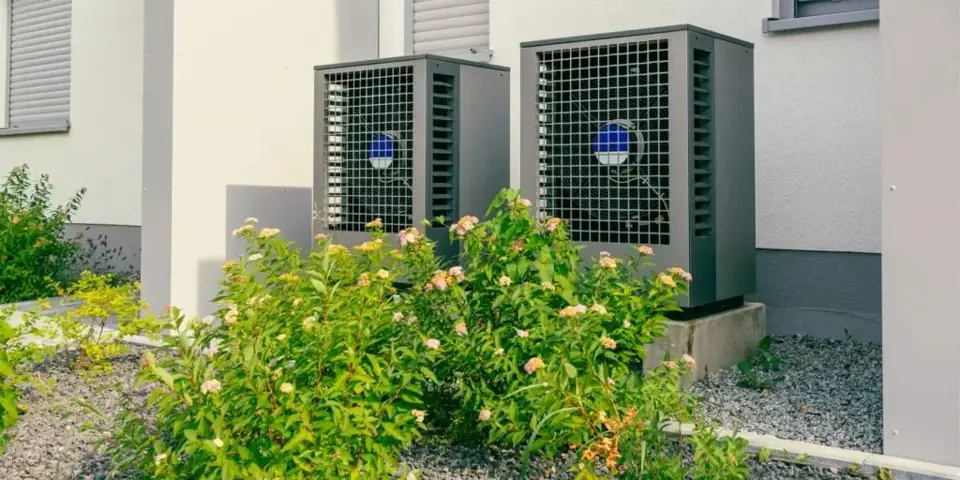Commercial heat pumps are designed to provide year-round climate control by seamlessly switching between heating and cooling modes. When this critical function fails, building occupants face uncomfortable temperatures while energy costs skyrocket. Understanding why your heat pump gets stuck in one mode can help you identify problems early and determine when professional intervention is necessary.
Heat pump mode switching issues affect thousands of commercial buildings annually, with repair costs ranging from hundreds to thousands of dollars depending on the underlying cause. According to the U.S. Department of Energy, proper heat pump operation can reduce energy consumption by 30-40% compared to traditional heating and cooling systems, making reliable mode switching essential for maintaining these efficiency benefits. This comprehensive guide explores the most common reasons why commercial heat pumps fail to switch modes and provides actionable insights for facility managers and business owners.
Understanding Heat Pump Mode Switching
Commercial heat pumps operate on a simple yet sophisticated principle: they move heat rather than generate it. During cooling mode, the system extracts heat from inside your building and releases it outdoors. In heating mode, this process reverses, pulling heat from outside air and transferring it indoors. The key component that makes this reversal possible is the reversing valve, which changes the direction of refrigerant flow throughout the system.
The mode switching process involves several interconnected components working in harmony. Your thermostat sends a signal to the control board, which then activates the reversing valve. Simultaneously, the system adjusts fan speeds, damper positions, and other operational parameters to optimize performance for the selected mode. When any component in this chain malfunctions, the entire switching process can fail, similar to how short cycling issues can disrupt normal system operation.
Modern commercial heat pumps typically include safety features that prevent mode switching under certain conditions. For instance, the system may refuse to switch modes if outdoor temperatures are too extreme or if internal sensors detect abnormal operating conditions. While these safeguards protect your equipment, they can sometimes create confusion when legitimate switching attempts fail. The Environmental Protection Agency emphasizes that these safety mechanisms are crucial for preventing equipment damage and maintaining system longevity.
The Reversing Valve: Your Heat Pump’s Mode Controller
The reversing valve serves as the heart of your heat pump’s mode switching capability. This solenoid-operated component contains a sliding piston that redirects refrigerant flow between heating and cooling configurations. When the valve receives an electrical signal from your control system, it physically moves to change the refrigerant path, effectively reversing the heat pump’s operation.
Reversing valve failures manifest in several ways. The most obvious sign is complete inability to switch modes, leaving your system stuck in either heating or cooling. However, partial failures can be more insidious, causing the valve to stick in intermediate positions that result in poor performance in both modes. Some valves develop internal leaks that allow refrigerant to bypass the intended flow path, reducing system efficiency and causing temperature control issues that mirror problems seen in failing rooftop HVAC systems.
Environmental factors significantly impact reversing valve performance. Extreme cold can cause the valve’s moving parts to become sluggish or freeze in position. Conversely, excessive heat can damage internal seals and gaskets. Electrical issues, such as voltage fluctuations or control wire problems, can prevent the valve from receiving proper switching signals. Regular maintenance helps identify these issues before they cause complete system failure.
Professional diagnosis of reversing valve problems requires specialized tools and expertise. Technicians use manifold gauges to measure refrigerant pressures in both heating and cooling modes, comparing readings to manufacturer specifications. Temperature measurements at various system points help confirm whether the valve is directing refrigerant flow correctly. In many cases, reversing valve replacement is more cost-effective than attempting repairs, especially for older units.
Thermostat and Control System Issues
Your thermostat serves as the command center for heat pump mode switching, but even minor malfunctions can prevent proper operation. Incorrect thermostat settings are surprisingly common, particularly in commercial buildings where multiple staff members may adjust controls. Many thermostats have specific heat pump settings that differ from standard heating and cooling systems, and using the wrong configuration can prevent mode switching entirely.
Wiring problems between the thermostat and heat pump create another category of switching failures. Commercial installations often involve complex control circuits with multiple zones and sensors. Loose connections, damaged wires, or incorrect installations can interrupt the switching signals. These issues may develop gradually due to vibration, temperature cycling, or simple aging of electrical components, much like the electrical problems that can affect commercial air conditioning systems.
Modern programmable and smart thermostats introduce additional complexity that can impact mode switching. Software glitches, incorrect programming, or compatibility issues with older heat pump systems can cause erratic behavior. Some thermostats include adaptive learning features that may conflict with manual mode switching attempts. Understanding your specific thermostat model’s operation is crucial for troubleshooting switching problems, and smart thermostat optimization can significantly improve system performance when properly configured.
Control system calibration affects mode switching reliability in subtle but important ways. Temperature sensors that drift out of calibration may cause the system to switch modes at inappropriate times or fail to switch when needed. Differential settings that control the temperature range between heating and cooling activation points require proper adjustment for optimal performance. Professional calibration ensures your control system responds appropriately to changing conditions.
Refrigerant System Problems
Refrigerant issues can prevent proper heat pump mode switching even when mechanical components function correctly. Low refrigerant levels affect system pressures throughout the heating and cooling cycles, potentially triggering safety switches that prevent mode changes. Unlike simple air conditioning systems, heat pumps require precise refrigerant charges to operate effectively in both modes, making proper levels critical for switching capability.
The EPA’s Section 608 regulations mandate proper refrigerant handling procedures, emphasizing that only certified technicians should work on refrigerant systems. Refrigerant leaks pose particular challenges for heat pump systems because they affect both heating and cooling performance. Small leaks may allow the system to operate in one mode while preventing switching to the other. Leak locations matter significantly, as problems in different parts of the refrigerant circuit can have varying impacts on mode switching ability.
Contaminated refrigerant can cause switching problems that are difficult to diagnose without proper testing equipment. Moisture contamination leads to ice formation in expansion devices and can cause erratic system behavior. Air contamination affects system pressures and can trigger safety controls that prevent mode switching. Non-condensable gases in the refrigerant circuit create similar problems and require professional evacuation and recharging procedures, similar to issues addressed in commercial refrigeration repair.
System pressure imbalances often develop gradually and may not immediately prevent mode switching. However, as these imbalances worsen, they can eventually cause the system to refuse mode changes or operate poorly in one or both modes. Regular pressure testing during maintenance visits helps identify developing problems before they cause complete switching failures.
Electrical Component Failures
Electrical problems account for a significant percentage of heat pump mode switching failures in commercial applications. Control relays that manage the switching process can develop contact problems, preventing proper signal transmission to the reversing valve and other components. These relays may work intermittently, creating frustrating situations where switching works sometimes but fails at other times.
Capacitor failures affect multiple aspects of heat pump operation, including mode switching capability. Start capacitors help motors overcome initial resistance when switching modes, while run capacitors maintain proper motor operation throughout the cycle. Failed capacitors can prevent the system from completing the switching process or cause poor performance after switching occurs. Capacitor problems often worsen gradually, making early detection challenging without regular maintenance, which is why professional HVAC installation includes proper electrical component sizing and installation.
Control board malfunctions can cause complex switching problems that require professional diagnosis. Modern heat pumps rely on sophisticated electronic controls that manage timing sequences, safety functions, and operational parameters. When these boards fail, symptoms can range from complete inability to switch modes to erratic behavior that seems to follow no logical pattern. Control board replacement typically requires programming and calibration to match your specific system configuration.
Sensor failures throughout the system can prevent mode switching by providing incorrect information to the control system. Temperature sensors, pressure switches, and flow sensors all play roles in the switching process. When these components fail or drift out of calibration, the control system may refuse to initiate mode changes as a safety precaution. Professional testing can identify sensor problems and determine whether calibration or replacement is necessary.
Mechanical Component Issues
Beyond the reversing valve, several mechanical components can prevent proper heat pump mode switching. Stuck dampers in ducted systems can create airflow problems that trigger safety switches, preventing mode changes until proper airflow is restored. These dampers may stick due to debris accumulation, worn actuators, or control system failures. Regular inspection and cleaning help prevent damper-related switching problems, and proper airflow control solutions are essential for maintaining system performance.
Fan motor problems can indirectly affect mode switching capability by creating airflow imbalances that trigger safety controls. Variable speed motors used in modern heat pumps require proper control signals to adjust speeds during mode switching. Motor control modules can fail, preventing the speed changes necessary for optimal performance in different modes. These problems often develop gradually and may initially cause only minor performance issues.
Heat exchanger problems, while less common, can prevent mode switching in severe cases. Blocked or damaged coils create pressure imbalances that may trigger safety switches. Ice formation on outdoor coils during heating mode can prevent proper switching back to cooling mode until the ice melts. Regular coil cleaning and maintenance help prevent these issues from developing, similar to maintenance practices recommended for commercial HVAC system components.
Expansion device problems can cause switching failures by preventing proper refrigerant flow control in different modes. Thermostatic expansion valves may stick or lose calibration, while electronic expansion valves can suffer control system failures. These components require professional diagnosis and adjustment to restore proper operation.
When to Call Professional Service
Recognizing when heat pump switching problems require professional intervention can save time, money, and prevent further damage to your system. Simple thermostat issues may be within the capabilities of facility maintenance staff, but most switching problems involve complex interactions between multiple system components that require specialized knowledge and tools to diagnose properly. The Occupational Safety and Health Administration (OSHA) emphasizes that electrical work on commercial HVAC systems should only be performed by qualified technicians due to safety hazards.
Safety considerations make professional service essential for many heat pump problems. Refrigerant systems operate under high pressure and require proper handling procedures to prevent injury and environmental damage. Electrical components in commercial heat pumps carry significant voltage that can be dangerous for untrained personnel. Professional technicians have the training, tools, and experience necessary to work safely on these systems, which is why there are specific HVAC issues that should be left to technicians.
Diagnostic complexity often exceeds the capabilities of basic troubleshooting approaches. Modern heat pumps include sophisticated control systems with multiple sensors, safety switches, and operational parameters that interact in complex ways. Professional diagnostic equipment can identify problems that would be impossible to detect through visual inspection or simple testing methods, similar to the comprehensive approach needed for troubleshooting air conditioning compressors.
Warranty considerations may require professional service to maintain coverage on your equipment. Many manufacturers specify that certain types of service work must be performed by certified technicians to maintain warranty protection. Attempting DIY repairs on complex switching problems could void your warranty and result in expensive out-of-pocket costs for future repairs.
The interconnected nature of heat pump systems means that switching problems often involve multiple components working together. Professional technicians understand these relationships and can identify root causes rather than just treating symptoms. This comprehensive approach prevents recurring problems and ensures long-term reliability of your climate control system.
Preventive Maintenance for Mode Switching Reliability
Regular maintenance represents the most effective strategy for preventing heat pump mode switching problems. Professional maintenance visits should include testing of the reversing valve operation, verification of control system calibration, and inspection of all electrical connections. These proactive measures identify developing problems before they cause system failures, which is one of the key reasons for commercial HVAC maintenance.
Seasonal maintenance timing aligns with natural mode switching patterns in most commercial buildings. Spring maintenance prepares the system for increased cooling demands, while fall service ensures reliable heating operation during colder months. This timing allows technicians to address any switching problems before they impact building comfort during peak demand periods. The Department of Energy recommends seasonal maintenance as essential for maintaining energy efficiency and system reliability.
Filter maintenance plays a crucial role in preventing switching problems by maintaining proper airflow throughout the system. Dirty filters create pressure imbalances that can trigger safety switches and prevent mode changes. Regular filter replacement or cleaning should be part of your routine maintenance schedule, with frequency adjusted based on your building’s specific conditions and usage patterns.
Documentation of maintenance activities helps track system performance trends and identify recurring problems. Maintenance records should include switching test results, refrigerant pressures, electrical measurements, and any adjustments made during service visits. This information proves invaluable for diagnosing complex problems and planning future maintenance activities, similar to the comprehensive approach used in commercial HVAC maintenance services.
Training facility staff to recognize early warning signs of switching problems can prevent minor issues from becoming major failures. Simple observations like unusual noises during mode switching, longer than normal switching times, or inconsistent temperature control can alert maintenance personnel to developing problems. Early detection allows for scheduled repairs rather than emergency service calls.
Cost Considerations and System Longevity
Understanding the financial implications of heat pump switching problems helps facility managers make informed decisions about repairs versus replacement. Minor issues like thermostat problems or loose electrical connections typically cost hundreds of dollars to repair. However, major component failures such as reversing valve replacement can cost several thousand dollars, particularly for larger commercial units, which is why understanding the financial benefits of HVAC system upgrades becomes important for long-term planning.
Age and overall system condition significantly influence repair cost-effectiveness. Heat pumps approaching the end of their expected lifespan may not justify expensive switching repairs, especially if other components are also showing signs of wear. The typical lifespan of commercial HVAC equipment varies by component and maintenance history, but most commercial heat pumps operate effectively for 15-20 years with proper care.
Energy cost implications of switching problems extend beyond immediate comfort concerns. Heat pumps stuck in inappropriate modes consume significantly more energy than properly functioning systems. A heat pump unable to switch to heating mode during cold weather may rely on expensive backup electric resistance heating, dramatically increasing utility bills. Similarly, cooling mode failures during hot weather can overwork the system and increase energy consumption.
System longevity benefits from addressing switching problems promptly rather than allowing them to persist. Operating a heat pump with switching problems often places additional stress on other components, potentially leading to cascading failures. Professional repair of switching issues helps maintain overall system health and extends equipment lifespan, which is why regular HVAC maintenance is so crucial for commercial buildings.
Budgeting for heat pump maintenance and repairs should account for the complexity of switching systems and the specialized expertise required for diagnosis and repair. Regular maintenance contracts often provide cost advantages over individual service calls while ensuring consistent attention to switching system components. These agreements typically include priority service for emergency repairs and may offer discounts on parts and labor.
Conclusion
Commercial heat pump mode switching problems can significantly impact building comfort and energy efficiency, but understanding the underlying causes helps facility managers respond appropriately. From reversing valve failures to control system malfunctions, most switching problems require professional diagnosis and repair due to their complexity and safety considerations.
The interconnected nature of heat pump systems means that switching problems often involve multiple components working together. Professional technicians bring the specialized knowledge, diagnostic tools, and safety training necessary to identify root causes and implement effective solutions. Regular maintenance remains the most cost-effective strategy for preventing switching problems and ensuring reliable year-round operation, as detailed in our comprehensive blog resources.
Prompt attention to switching problems prevents minor issues from becoming major failures while maintaining optimal energy efficiency. Whether dealing with thermostat calibration, refrigerant system problems, or mechanical component failures, professional service ensures proper diagnosis and repair that restores full system functionality. Understanding when heat pumps can effectively replace gas furnaces in commercial buildings also helps facility managers make informed decisions about system upgrades and replacements.
Frequently Asked Questions
Most commercial heat pumps complete mode switching within 3-5 minutes under normal operating conditions. The process involves several steps including reversing valve operation, system pressure equalization, and control system adjustments. Longer switching times may indicate developing problems with the reversing valve, control system, or refrigerant levels that warrant professional inspection. The Department of Energy notes that excessive switching times often indicate efficiency problems that can significantly impact energy costs.
Yes, heat pumps can become stuck in intermediate positions when the reversing valve fails to complete its travel or when control system malfunctions occur. This condition typically results in poor performance in both heating and cooling modes, as refrigerant flow patterns become disrupted. Professional diagnosis is essential to identify whether the problem lies with the reversing valve, control system, or other components, similar to diagnosing common commercial HVAC problems.
This common problem often indicates a reversing valve that can move in one direction but not the other, frequently due to mechanical wear or debris accumulation. Control system problems, such as failed switching relays or thermostat malfunctions, can also prevent switching to heating mode while allowing cooling operation. Professional testing of the reversing valve and control circuits can identify the specific cause, and proper HVAC load calculations ensure the system is properly sized for both heating and cooling demands.






